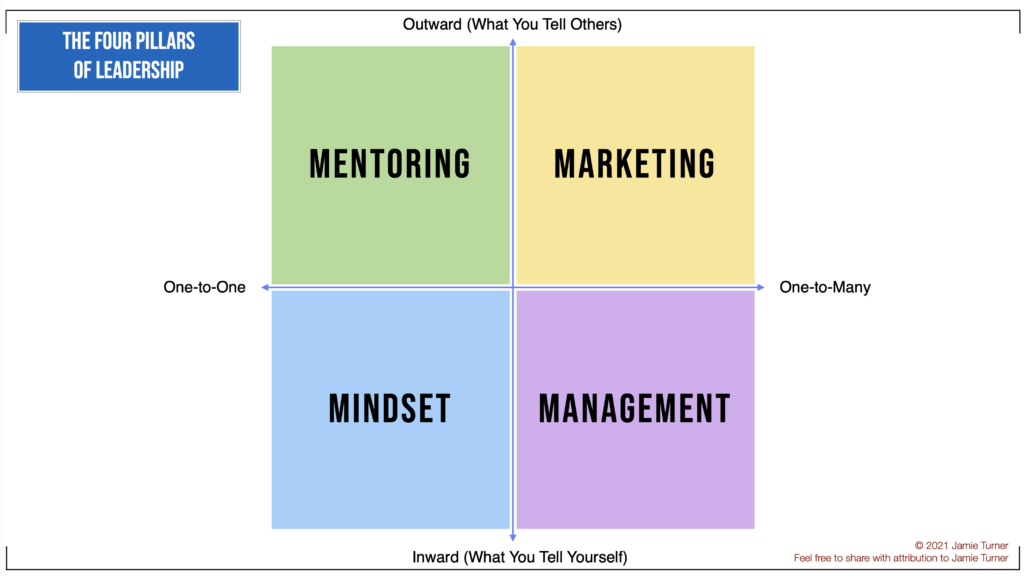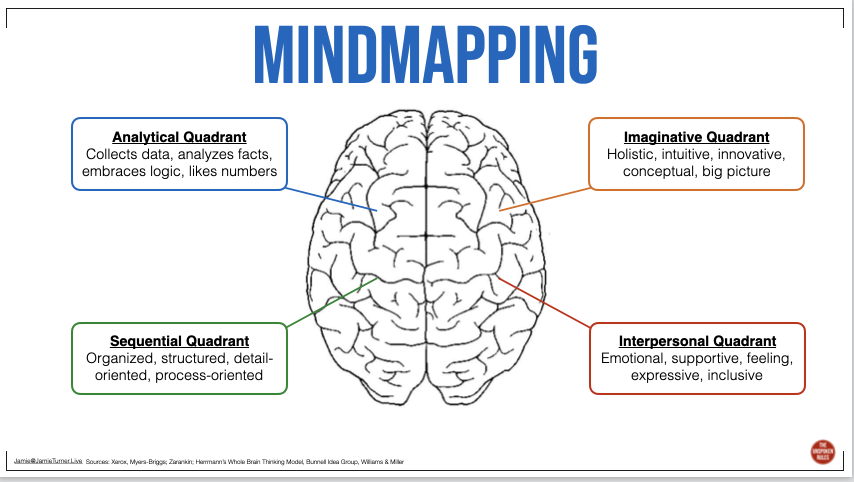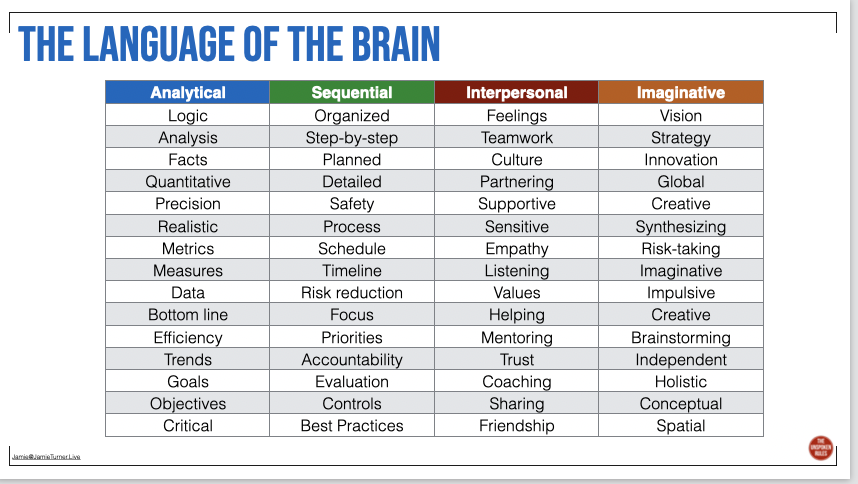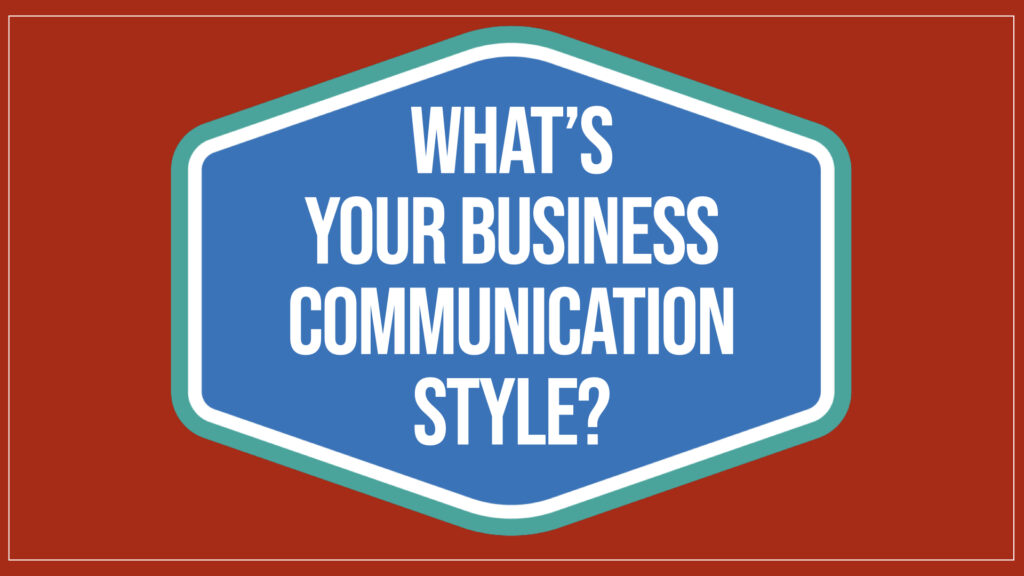If you’re like a lot of people reading this, you’re interested in improving your communication skills.
It might be because you’re an executive who wants to do a better job working with employees. Or, it might be because you’re a manager who is trying to mentor a co-worker. It might even be because you’re a sales executive who wants to improve their persuasion skills.
No matter what the reason, you’ve come to the right place.
Below are 37 science-based tools, tips, and techniques you can use to improve your communication skills. They’re based on research studies and articles like this one that provide insights into better communication.
They’re also based on my own research and experience that has resulted in the Four Pillars of Leadership (seen below).
The Four Pillars are the foundational elements of my Unspoken Rules of Leadership workshops that I teach at conferences and corporations around the globe.

Okay, with all that said, let’s get into it, shall we? Here are 37 science-based tools, tips, and techniques you can use to improve your communication skills.
- Self Awareness: The first step for any executive who wants to improve their communication skills is to understand their communication style. Want to find out which of four communication styles you use? If so, take our 8-question communication styles quiz to find out.
- Laying the Foundation: Good communication isn’t about persuasion. And it’s not about convincing someone of your point-of-view. Instead, it’s about building a bridge between you and the person you’re trying to communicate with.
- Understand Your Employees: There’s an old saying, “People join companies but quit their bosses.” Consider that for a moment. And then work towards a greater empathy and understanding of your employees.
- Improve Your Emotional Intelligence: Effective leaders are generally more emotionally intelligent than their peers. This enables them to stay calm under pressure and to have better people skills. (Emotional Intelligence is loosely defined as the ability to manager your emotions under pressure. There’s much more to it, but that, in a nutshell, is what we’re talking about here.)
- Use System 2 Thinking: System 1 thinking and System 2 thinking are related to Emotional Intelligence. System 1 thinking originates at the base of our skull and it’s where our impulses reside. Management by impulse is not a good thing. Instead, use System 2 thinking, which resides in the pre-frontal Cortex. This is where planning, foresight, and predictability reside.
- Watch the Other Person’s Face: When we closely observe a person’s face, gestures, and tone-of-voice, our brain begins to align with theirs in a process called neural resonance. That lets us know more fully what they think and feel. In an fMRI study at Princeton, researchers found that neural resonance disappears when people communicate poorly.
- Focus on the North Star: The key idea behind the North Star can be seen in the image below.
- Understand How People Make Decisions: People make decisions based on emotion and then rationalize their actions with logic. That’s why you can never convince your crazy neighbor that their conspiracy theories are … well, crazy. It’s because they aren’t thinking logically. Instead, they’re thinking emotionally and then rationalizing their thoughts with (bad) logic. We’ll dig into this more later, but for now, just understanding that will be a big help.
- Two Human Needs — Safety and Control: Humans are driven by two urges. The need to feel safe and the need to feel in control. If you nurture those two urges when you have a conversation with someone, they let their guard down. When people let their guard down, they’re more likely to listen to what it is you’re saying.
- Loss Aversion: Research shows that humans are more likely to avoid loss than they are to move toward gain. Marketers understand this, which is why a headline that says, “Change your oil now to avoid ruining your car’s engine” will outperform “Keep your car healthy by changing your oil.” Use this technique judiciously with employees since over-use can have a negative impact. (See? I just used the technique in the previous sentence.)
- Understand the Two Levels of Employee Emotions: People’s emotions have two levels. The presenting behavior is a part above the surface you can see. Beneath that is the underlying feeling that motivates their behavior. Separate the person from the problem. Focus on their motivations rather than their requests.
- Use MindMapping to Understand How People Think: MindMapping is a technique I developed based on research by Xerox, Ned Herman, Myers-Briggs, and other experts. It divides the brain into four quadrants. Most people have a dominant quadrant followed by a secondary quadrant. Review the image below and then use it to understand how your employees think. (How your employees think is very different from how they communicate. Those two concepts are related, but different.)

- Use the Vocabulary of the Person You’re Communicating with: Review the MindMap above. Then, figure out which of the four quadrants matches the person you’re talking to. If they’re in finance, they’re probably dominated by the Analytical Quadrant. If they’re an entrepreneur, they’re probably dominated by the Imaginative Quadrant. If they’re in HR, the Interpersonal Quadrant. Operations, the Sequential Quadrant. Now, here’s the big idea — the next time you meet with someone dominated by one of the quadrants, use the vocabulary listed below. By using their vocabulary in the conversation, they’ll feel more comfortable with you and will be more likely to connect with you.

- Focus on Connecting, Not Overcoming: The problem most people face with their communication skills is that they focus on using logic to change the other person’s mind. That’s a mistake and almost never works. Instead, focus on building a connection with the other person first. Then, after they trust you, you can introduce ideas and concepts to them so that they gradually arrive at your point-of-view on their own.
- Read Chris Voss’s Book: Never Split the Difference, by Chris Voss, sat on my bookshelf for years. I am so sorry I didn’t read it earlier. It’s amazing. And many of the ideas I’m sharing here with you are from his book. If you like what you’ve read so far, drop everything and order Chris’s book today.
- Use Calibrating Questions: This is one of the concepts from Chris’s book. Check out the concept below.
- If Things Get Heated, Lower Your Pitch, Volume, and Tempo: We’ve all had moments when a conversation gets heated. That’s the nature of being human. When this happens, its your goal to reel things back in so that they can get back on track. You can do this by lowering your pitch, your volume, and your tempo. By doing so, you’ll find that things settle down and ease up.
- How to Lower Your Pitch if You Have a High-Pitched Voice: When I teach communication skills workshops around the globe, people will often ask, “How do I lower the pitch of my voice if I have a high-pitched voice?” One way to do this is to tilt your head down so your chin moves towards your chest. That’ll lower the pitch by about 10% to 20%.
- Mirror the Other Person’s Behaviors: Mirroring someone else puts them at ease and builds a relationship between the two of you. Mirroring works because we fear what’s different and are drawn to what is familiar. Mirroring can be done with speech patterns, body language, vocabulary, tempo, and tone-of-voice.
- The Power of Mirroring: Psychologist Richard Wiseman tested whether mirroring or positive reinforcement got better tips for waiters. One group of waiters used terms such as “great,” “no problem, and “sure.” The other group simply mirrored their customers by repeating the orders back to them. The average tip for the waiters who mirrored was 70% more than those who used positive reinforcement.
- Learn to Label: Scientists found that when people are shown photos of faces with strong emotion, the amygdala lights up, the part that generates fear. But when they are asked to label the emotion, activity moved to the area that governs rational thinking. In other words, labeling a negative emotion disrupts its raw intensity. Interestingly, labeling a positive emotion increases its intensity.
- How to Label: Once you have spotted an emotion, the next step is to label it. Labeling it can be phrased as a statement or a question. A label almost always begins with, “it seems like,” “it sounds like,” or “it looks like.” For example, you might say, “It looks like what I just said concerns you.” Or, “It sounds like you’re a bit frustrated with what we’re talking about here.” The key is to phrase it as a neutral statement of understanding.
- Don’t be Afraid of the Word No: Train yourself to hear “no” as something other than rejection. It can mean a lot of things:
- I don’t think I can afford this
- Now is not the right time
- I need more information
- I want to talk this over with someone else
- I am not ready to agree
- You are making me feel uncomfortable
- Don’t be Afraid of the Word No Part 2: Sometimes, you want someone to say no. When they do, they feel as though they’re in control — even though they basically said yes to your question. Here’s an example — if you end a conversation with, “Is this a crazy idea?” what you’ve done is given them the opportunity to say “no” which is essentially a yes, but they feel more comfortable saying it.
- Headlining and Bookending: Sometimes communication gets muddled when people go off on tangents. I encourage my clients to headline and bookend. That means that before you start your comment, you headline it with a kick-off statement. Then, you speak for a few paragraphs about your topic. After that, you wrap-up by bookending it with a comment that summarizes what you said.
- Understand the Four Kinds of Questions: There are four kinds of questions you can ask someone. Open questions encourage discussion (e.g., “What are you looking for in a car?”). Closed questions narrow the focus (e.g., “What do you like about this car?”). Permission questions open up a situation (e.g., “Do you mind if I ask about cars you already own?”). Magic wand questions explore what the person answering wants or desires (e.g., “If money were no object, what kind of car would you own?”). Catchall questions build bridges to the next phase of the process (e.g., “Do you mean something like this car?”).
- Clarifying Questions via Email: Most companies minimize their interaction with new clients prior to sales presentations because they don’t want to burden them with too many questions. Actually, the opposite is true. If you handle the questions properly, you can build rapport and increase the odds dramatically.In an ideal situation, you should know that you’ve already won the account prior to walking into the room.
- How to Connect with Co-Workers: What’s the best way to connect with a co-worker (that you’re struggling to connect with)? Ask for their help or their opinion. It works like magic. Give it a try!
- Practice Your Listening Skills, too: There are six different kinds of listening skills. Be sure to put them into practice, too. Here they are:
- Active Listening: Completely focused on the spoken and unspoken messages being sent
- Critical Listening: Also referred to as evaluative listening, it involves problem-solving, analysis, and decision-making.
- Informational Listening: This is used by students or employees who are trying to learn something new.
- Empathetic Listening: Arguably, the most important kind of listening. Here, you listen, offer understanding, and give your own opinion only when asked.
- Appreciative Listening: It’s a relaxed form of listening that is less about communicating as much as it’s about enjoyment (i.e., podcasts, music, sermons, etc.)
- Visual Listening: This is “listening for” the non-verbal communication that happens through body language, emails, tone-of-voice, etc.
- Drop the Rope: This is one of my favorite tips from a book titled UnReceptive by my friend Tom Stanfill. Many people will start a conversation with you in a state of active resistance. If you drop the rope, you can remove the resistance. Dropping the rope means that you stop trying to use logic and persuasion to convince someone of your point-of-view. Instead, you stop playing tug-of-war and start building a relationship by discovering your commonalities. By dropping the rope, you show the other person that you’re only interested in something that would be mutually beneficial. In essence, you’re saying, “This is a two-way street. Let’s see what we have in common.”
We’ve covered a lot of ground here, so there’s a lot to digest. Keep this post handy so you can refer to it later. Better still, forward it to a friend — they might find the tips, tools, and techniques helpful, too!

About the Author: Jamie Turner is an internationally recognized author, professor, consultant, and speaker who has helped employees at The Coca-Cola Company, Holiday Inn, Microsoft, Verizon and others do a better job leading, managing, and mentoring others. You may have seen Jamie in Inc., Entrepreneur, Business Insider, or Forbes. He’s also a regular guest on CNN and HLN, where he delivers segments on marketing, persuasion, and leadership. Jamie is the co-author of several essential business books. You can follow him on TikTok, Instagram, and YouTube.

